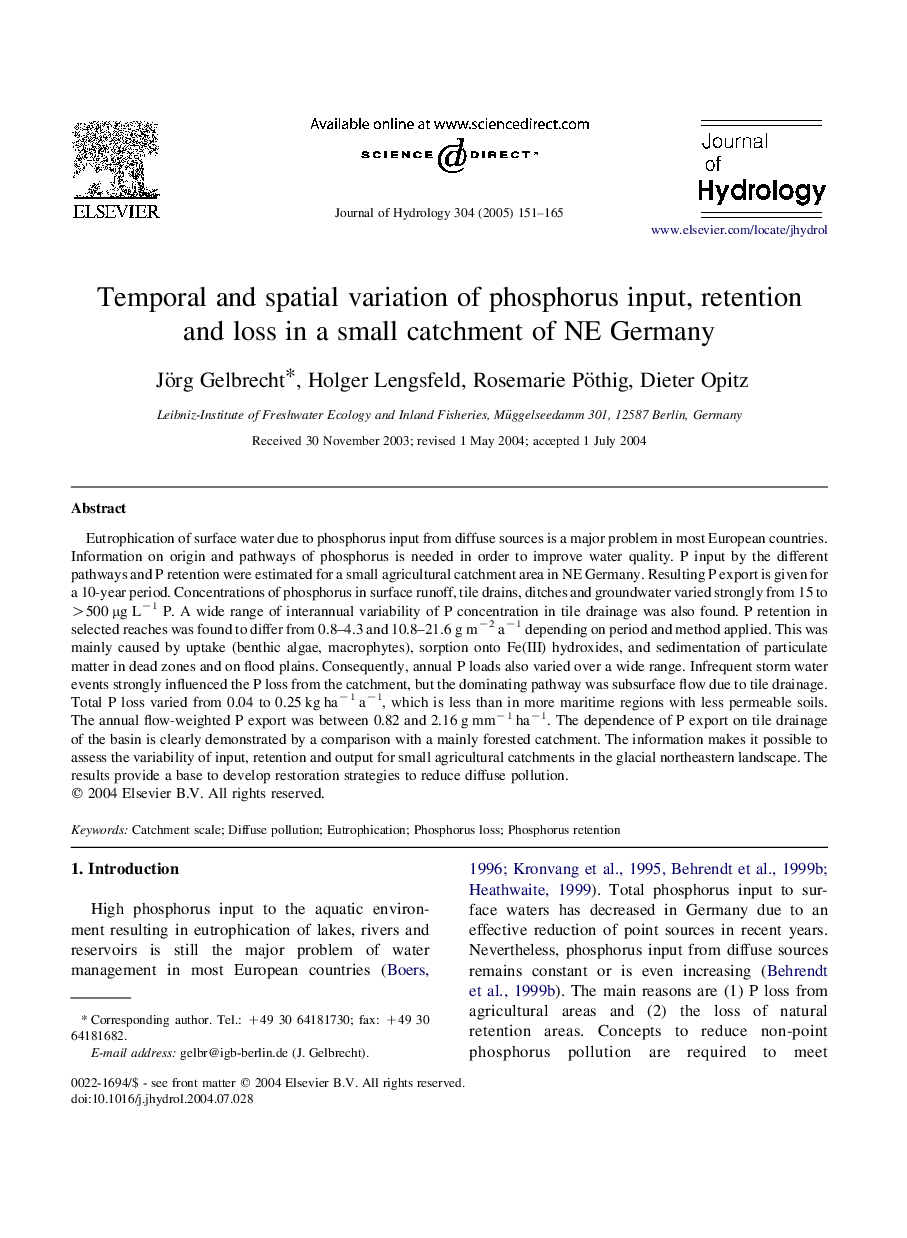| Article ID | Journal | Published Year | Pages | File Type |
|---|---|---|---|---|
| 9491533 | Journal of Hydrology | 2005 | 15 Pages |
Abstract
Eutrophication of surface water due to phosphorus input from diffuse sources is a major problem in most European countries. Information on origin and pathways of phosphorus is needed in order to improve water quality. P input by the different pathways and P retention were estimated for a small agricultural catchment area in NE Germany. Resulting P export is given for a 10-year period. Concentrations of phosphorus in surface runoff, tile drains, ditches and groundwater varied strongly from 15 to >500 μg Lâ1 P. A wide range of interannual variability of P concentration in tile drainage was also found. P retention in selected reaches was found to differ from 0.8-4.3 and 10.8-21.6 g mâ2 aâ1 depending on period and method applied. This was mainly caused by uptake (benthic algae, macrophytes), sorption onto Fe(III) hydroxides, and sedimentation of particulate matter in dead zones and on flood plains. Consequently, annual P loads also varied over a wide range. Infrequent storm water events strongly influenced the P loss from the catchment, but the dominating pathway was subsurface flow due to tile drainage. Total P loss varied from 0.04 to 0.25 kg haâ1 aâ1, which is less than in more maritime regions with less permeable soils. The annual flow-weighted P export was between 0.82 and 2.16 g mmâ1 haâ1. The dependence of P export on tile drainage of the basin is clearly demonstrated by a comparison with a mainly forested catchment. The information makes it possible to assess the variability of input, retention and output for small agricultural catchments in the glacial northeastern landscape. The results provide a base to develop restoration strategies to reduce diffuse pollution.
Related Topics
Physical Sciences and Engineering
Earth and Planetary Sciences
Earth-Surface Processes
Authors
Jörg Gelbrecht, Holger Lengsfeld, Rosemarie Pöthig, Dieter Opitz,
